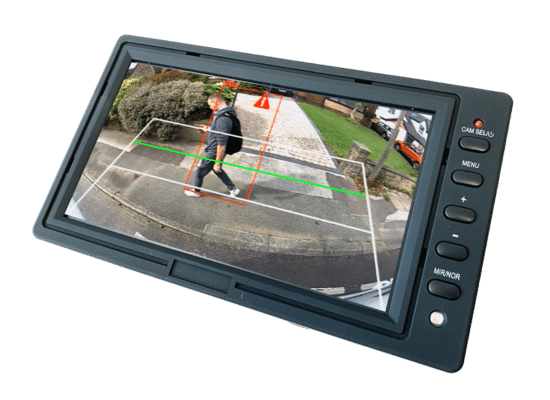
Following the introduction of the Direct Vision Standard (DVS), VUE was determined to ensure that all customers with our safety kits installed received continued support beyond the compliance deadline.
Read More
• Building safer road infrastructure
• Improving post-crash response
• Introducing new legislation
• Increasing public awareness of responsibility on the road
Much like the Direct Vision Standard, the strategy is largely focused on protecting vulnerable road users as they face the greatest risk compared to users of large vehicles such as HGVs. This is evidenced by the fact that pedestrians, cyclists, and motorcyclists made up two-thirds of those killed or seriously injured on Greater Manchester roads in 2022.
With the metropolitan city of Manchester often likened to the ‘Capital of the North’ it’s no surprise that there is now a possibility of implementing the HGV permit scheme devised by Transport for London. The region’s high population and dense road network, along with Manchester’s status as the European Capital of Cycling in 2024 make it appear highly possible that a scheme similar to DVS will be introduced to protect vulnerable road users.
January 2024
Draft version of the Vision Zero Strategy was published
Autumn 2024
Period of public engagement before first Vision Zero Action Plan is published
Ongoing
Bi-Annual Progress Reports will be shared that details the success and progress of activities.
2030
Target to reduce road traffic deaths and life-changing injuries by 50%.
2040
Goal to completely eliminate road traffic deaths and life-changing injuries.
The new DVS requirements taking effect in October 2024, require vehicles to be fitted with a Moving Off Information System (MOIS) which activates on proximity and alerts the driver in-cab. If this is replicated in Greater Manchester's Vision Zero strategy and an HGV is found without a MOIS, this could result in substantial fines and the vehicle being taken off the road.
The DVS guidelines also state operators must ensure vehicles have a Blind Spot Information System (BSIS) to eliminate blind spots down the nearside of the vehicle and provide alerts when a VRU is identified. Fleets would need to install AI technology that distinguishes between vulnerable road users and static objects.

The Pedestrian AI human detection camera system...
• Provides real-time visual and audible alerts in-cab to warn the driver of potential risk
• Accurately identifies humans around a vehicle rather than static objects
• Gives drivers a clear view of their surroundings using an HD video output
• Sends alerts to VUEhub for fleet managers to review


Following the introduction of the Direct Vision Standard (DVS), VUE was determined to ensure that all customers with our safety kits installed received continued support beyond the compliance deadline.
Read More
If you're planning on applying for the DVS (Direct Vision Standard) grace period, this post will provide everything you need to apply.
Read More
Explore why Artificial Intelligence is set to play a huge role in the new Direct Vision Standard coming into effect in October 2023.
Read More